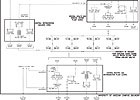
FIGURE 1. A schematic of the University of Arizona’s utility production system. (Figure courtesy of GLHN Architects & Engineers, Inc.)
Thermal ice storage is the latest addition to an energy-wise response to heating and cooling demands for 176 buildings on the University of Arizona’s 355-acre campus. With a mix of chiller types and fuel sources, the school’s effort to integrate its energy system and further diversify with TES has already paid off not only in day-to-day operations, but it also helped avoid a service meltdown in the midst of an outage caused by an off-campus accident.
With the leadership of a forward-thinking facilities management team, a supportive administration, and an energetic and creative group of consulting engineers and suppliers, the University of Arizona in Tucson (UA) has built an innovative and unusual integrated energy system that is capable of responding to almost any utility emergency and is expected to result in substantial cost savings over time.
The UA is a doctorate-granting university with high research activity. The campus consists of over 10,000,000 sq ft of buildings that includes research laboratories, a regional hospital, academic, residential, administration, and civic buildings. The current campus peak requirements are 23,000 tons of chilled water, 190,000 lb/hr of steam and 28 MW of electricity.
Current System Overview
The university’s campus utility production system consists of three central plants, connected by seven miles of distribution tunnels. The Central Heating and Refrigeration Plant (CHRP), and the Arizona Health Science Plant (AHSC), located near the University Medical Center, generate steam, electricity, and chilled water, while the Central Refrigeration Plant (CRB) produces only chilled water. The chilled water piping distribution system is interconnected in a grid arrangement so that chilled water from any plant can be pumped to any building on campus.The AHSC plant provides steam to the University Medical Campus and the northern end of campus while the CHRP plant provides steam to the south and central locations. Steam piping is also interconnected and capable of cross campus supply. Two gas turbine generators produce electric power and provide steam to the campus distribution system. The cogeneration unit at the AHSC is islanded to the CRB refrigeration plant while the unit at the CHRP is paralleled to the utility grid.
Figure 1 shows the plants and the capacity of their equipment. Also illustrated are the interconnections between utilities from off- campus sources and those utilities produced on campus. This fully-integrated energy system is managed from the facilities management computerized control center, which provides 24/7 monitoring and control of energy flows and costs. The operator can dispatch system components such as chillers, boilers, pumps, towers, and ice storage to obtain the optimal result given variables such as cost, weather, campus schedules, and maintenance requirements.
Background/History
GLHN Architects and Engineers, Inc., a Tucson-based, employee-owned, multidiscipline firm, has worked with the university for four decades to provide professional design services, infrastructure expansion, and master planning. The current utility system has evolved in response to ever-changing campus and utility market conditions. As new buildings were being planned or campus precincts were identified for growth, utility studies were undertaken to determine the most cost-effective ways of meeting their steam and chilled water needs. Principles of life-cycle economics, which balance energy, operating, and installation costs were the primary input used in decision making.Other non-tangible factors evaluated and considered were reliability, fuel flexibility, and the ability to add for future capacity. These studies resulted in the implementation of a series of projects over a 10-yr period to install new production equipment and expand the distribution. During the course of these projects, chillers were changed to eliminate CFC-based refrigerants, chilled water treatment, and resulting quality was greatly improved, and a distribution system is now in place that will allow campus growth for many years to come. Chilled water distribution piping ranges in size from 12 to 48 in.
Need for Reliability
As the campus grew and various types of equipment were installed at the central plants, an overall strategy emerged for providing chilled water to the campus in the event that the external electric utility service was interrupted. This is especially critical because the University Medical Center, a 365-bed hospital affiliated with the University of Arizona College of Medicine, is required to meet stringent medical standards for temperature control and reliability. Recently, with the assistance of Sun Mechanical Systems (general contractor), Trane, and CALMAC, a campus thermal ice storage system has been installed to meet the growing need for chilled water on campus.Descriptions of individual Plants
Installed at the AHSC plant is a 4.5 MW natural gas combustion turbine generator. The electrical output from the turbine supplies electricity to the CRB chiller plant or a high-voltage electric steam generator. Installation of the electric boiler allows full load operation of the turbine in the winter months when the chillers at the CRB do not fully electrically load the gas turbine. Additional steam is provided to the campus by a heat recovery steam generator (HRSG) utilizing exhaust from the gas turbine. Unique at this plant is the ability to shut down the natural gas and electric boilers in the summer (one boiler is “warm,” using steam from the HRSG in a mud drum to meet the backup requirements for the University Medical Center). The combustion turbine runs fully loaded to provide electricity to the CRB chillers, and steam produced by the HRSG is sufficient to meet the summer steam loads.The CRB generates chilled water using high-efficiency water chillers during the day and glycol chillers during the night. Electricity provided from the AHSC gas turbine powers the glycol chillers and 70% of the water chillers and auxiliaries. The off-campus electric utility provides the remaining 30% of the power for the water chillers. During the winter months, the CRB can supply the entire campus’ chilled water requirements using only the chillers powered by the AHSC turbine.
The CHRP plant also generates chilled water using water chillers during the day and a glycol chiller at night. In this plant, a 6.5 MW natural gas combustion turbine parallels the electric utility entering the campus. A HRSG utilizing exhaust from this turbine provides steam to the campus, and to a steam turbine operating in combined cycle to generate an additional 1.7 MW of electricity during summer periods when campus steam loads are met by the HRSG at the AHSC plant.
The result of these plant configurations is a highly efficient, integrated energy system. However, an important side benefit is a chilled water system that can maintain operations (albeit at reduced loads) even when the off-campus supplied electricity is interrupted. In this event, chilled water is produced at the CRB using electricity supplied by the AHSC turbine.
A recent power outage in central Tucson provided an unexpected test run for the chilled water system. At midday in April 2008, a time when the campus chilled water load was at 60% of full load, the off- campus electricity supply was unexpectedly interrupted by an off-campus accident involving a transformer. The outage lasted approximately two hours. At that time, the CRB water chillers were using AHSC turbine generated electricity. The CRB condenser water pump operating on AHSC power was down for preventative maintenance.
As a result of the outage and planned maintenance, the campus chilled water distribution system was effectively shut down. Once electricity was restored, the chillers required one to two hours to get back online and to produce 42°F chilled water. However, facilities personnel were able to dispatch chilled water immediately by melting the stored ice from the previous night. What could have been a 3- to 4-hr outage was contained within a 2-hr time frame. Because of the various equipment options available to the operators, a backup plan was quickly implemented. Activating the ice melt allowed rapid recovery from loss of chilled water production, minimizing the disruption and outage timeframe.
Although UA has recently gained international recognition for its role in the flight of the Phoenix Mars Lander and other high profile research activities, the institution is also building a worldwide reputation for innovation in facilities design - and the future will undoubtedly bring additional changes to the plants at UA to keep the system on the cutting edge. In the near term, more thermal ice storage and additional boilers will be installed at the CHRP plant, which will also be upgraded with the replacement of aging cooling towers with a new four cell cooling tower in the plant compound. The new tower will have 12,000 tons of capacity. A new boiler at the AHSC campus will also come online in the summer of 2008.
For additional information or to schedule a tour of the university’s energy-conserving utility plants, contact Albert Tarcola, UA director of facilities management, or Gordon Bush, senior staff technician. Other key team members include Joel Valdez, senior vice president for business affairs; Bob Herman, assistant director of facilities management; Marianne Deutsch, senior staff technician; Scott Candrian of Sun Mechanical Systems; and the engineering department at GLHN.ES




